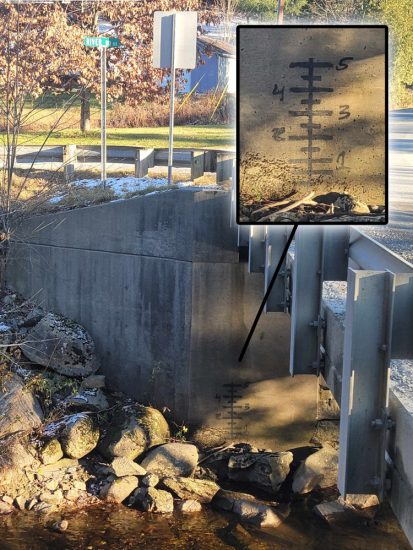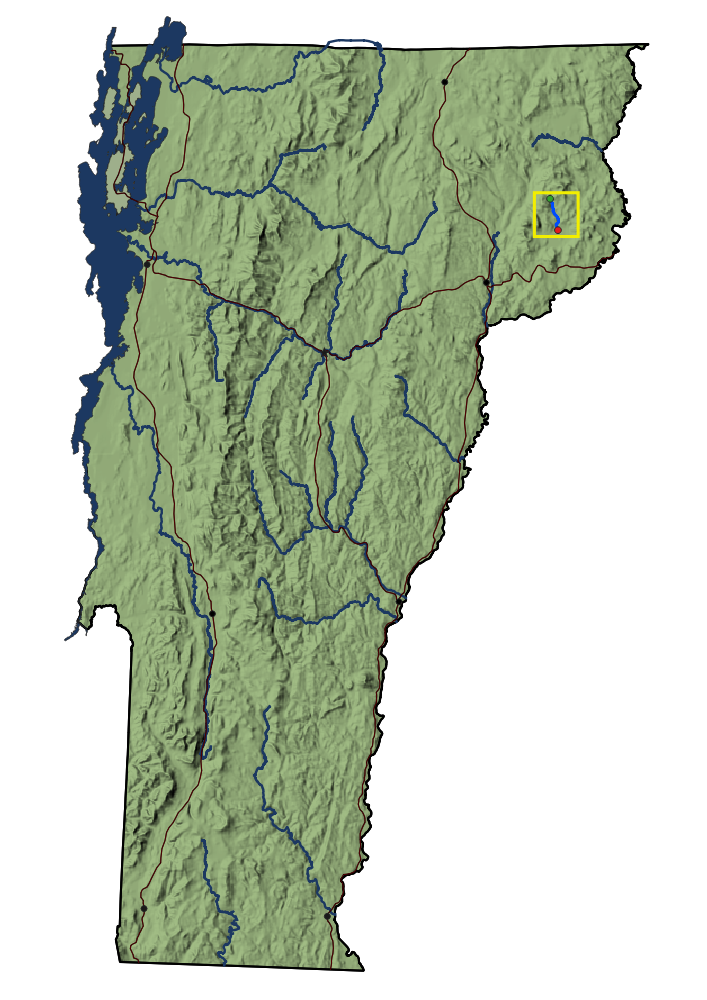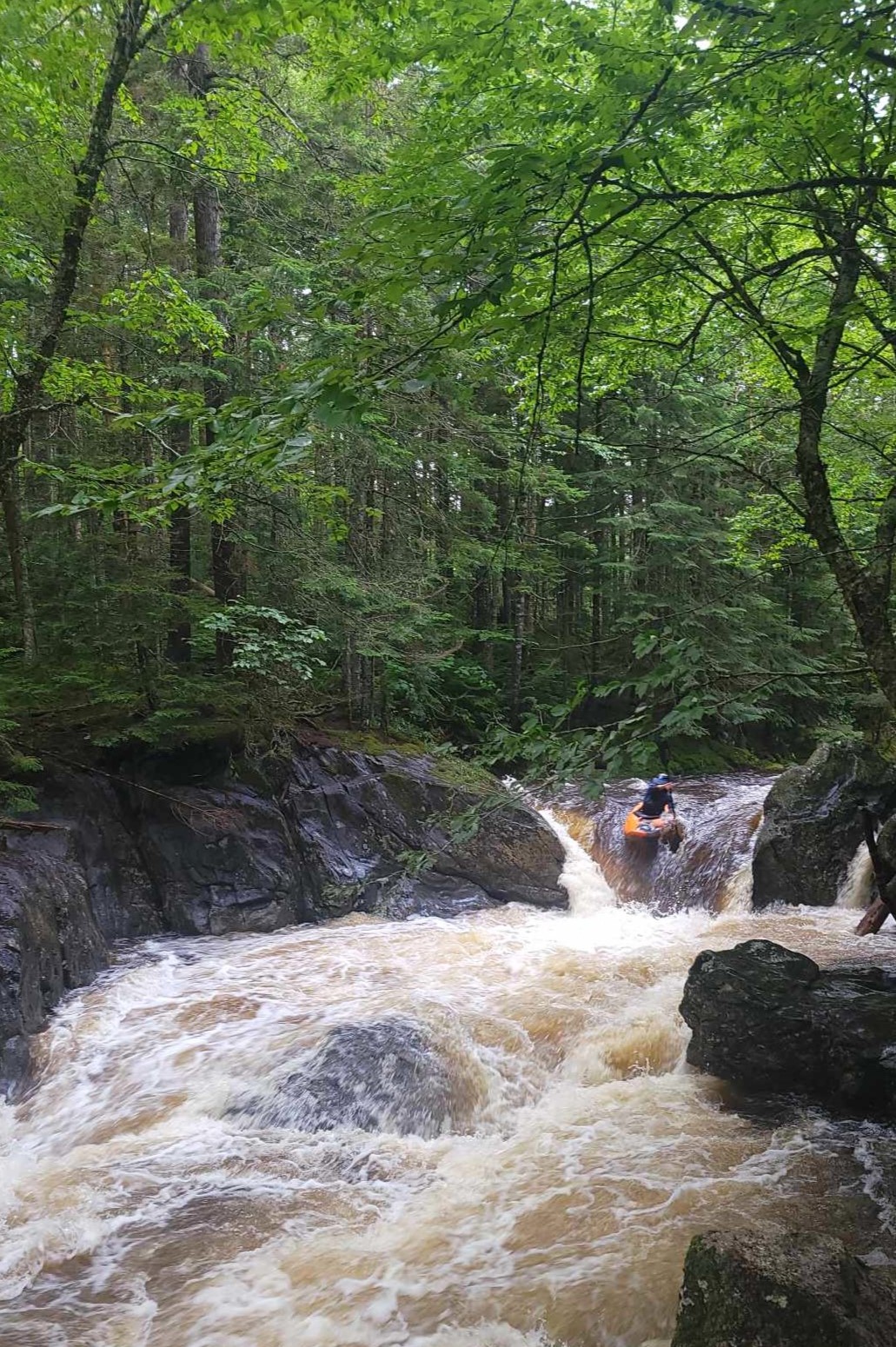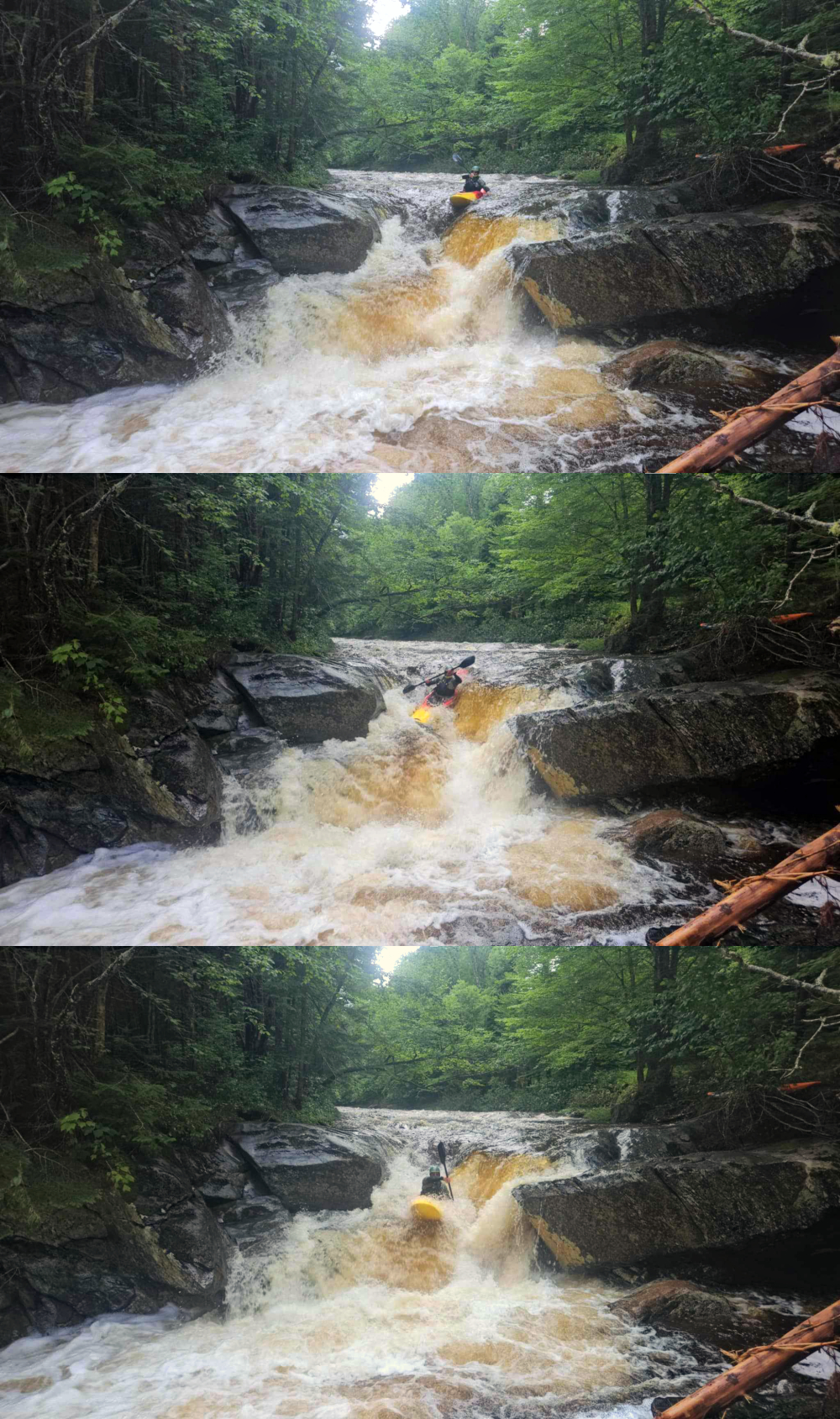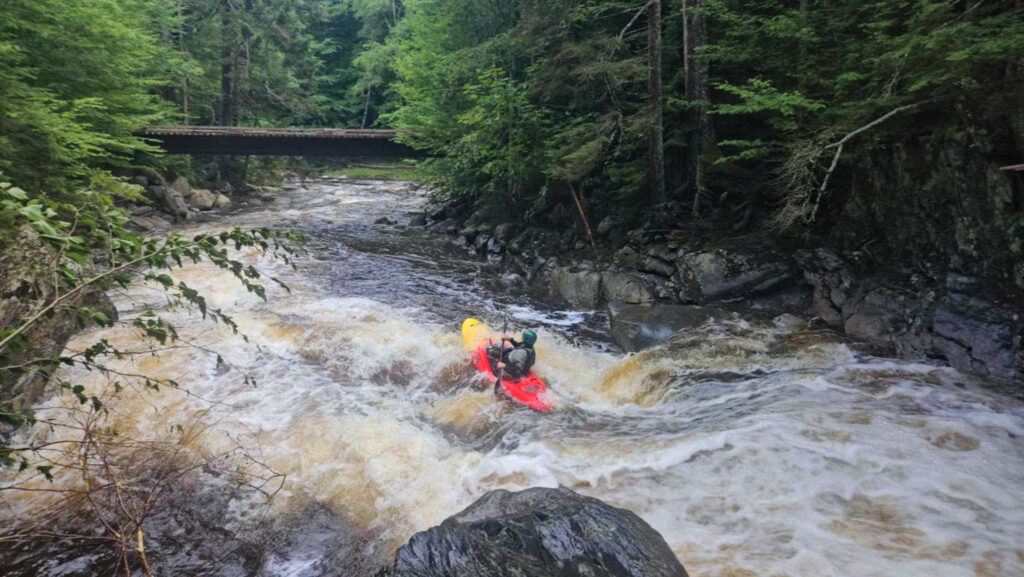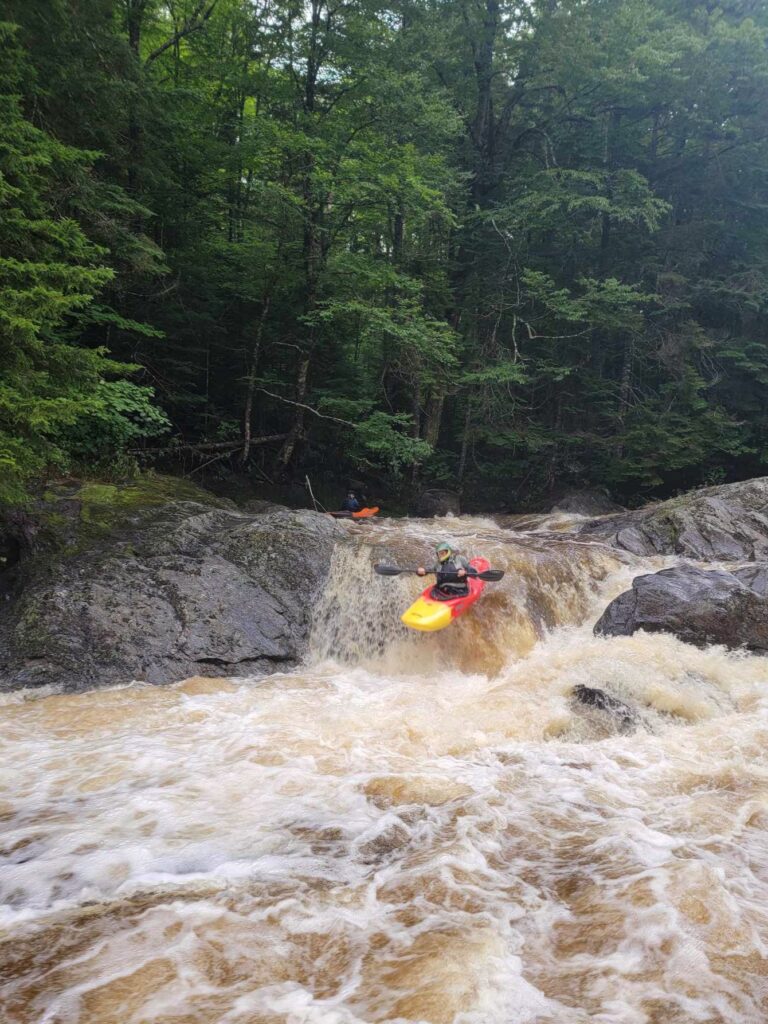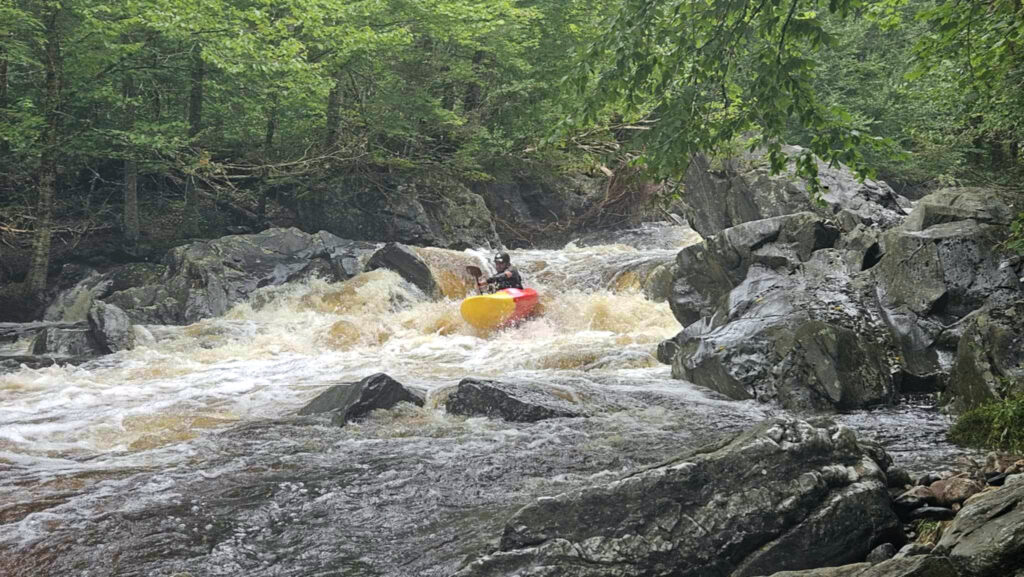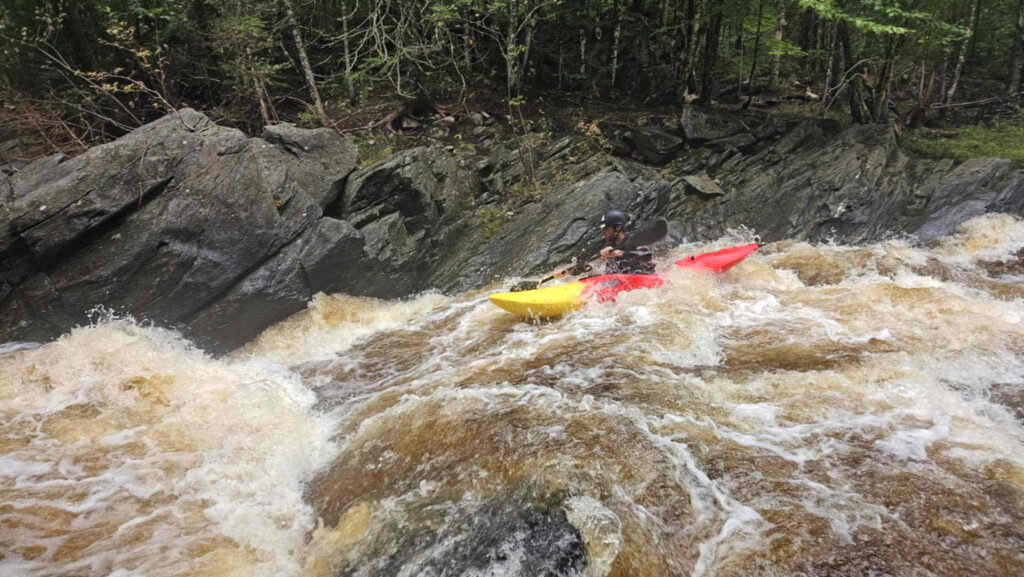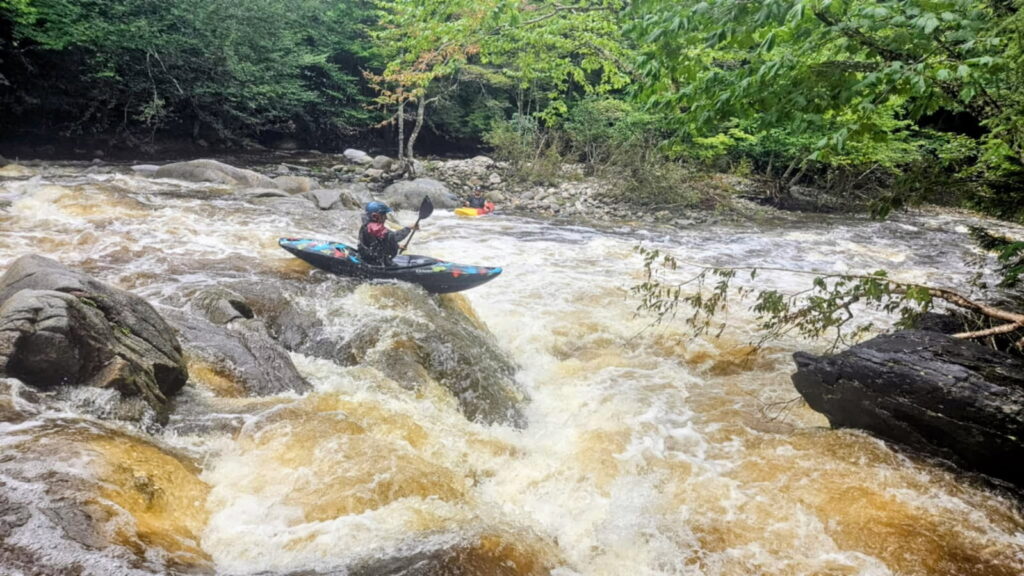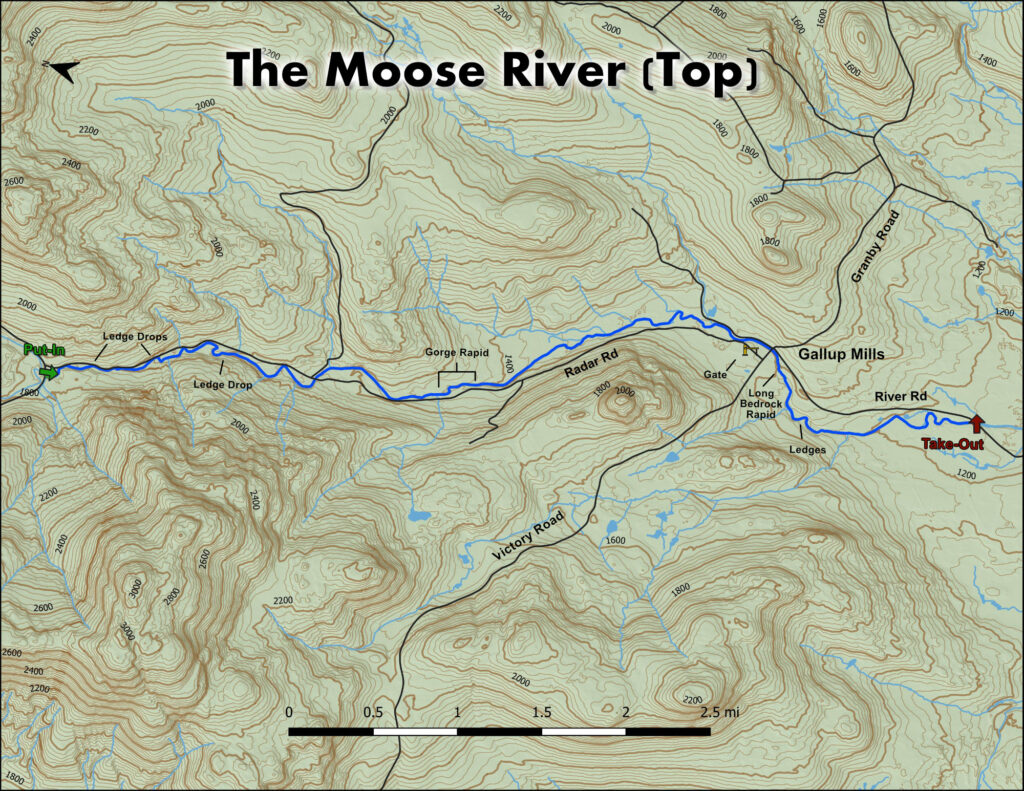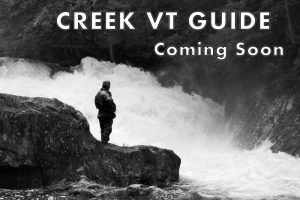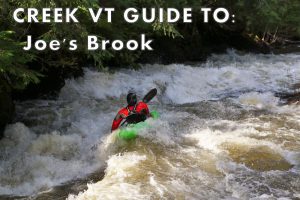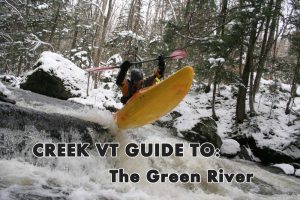For me to paint a complete picture of what the Moose river is and how it feels would take away from all the adventure and excitement that doing a personal first descent is all about. Rivers are for paddling; the reasons why more paddlers have not flocked to the moose by the bus load bewilders me, as just 10 miles away lies Vermont’s premier mountain bike destination, The Kingdom Trails, so adventurous types are near frequently. Whatever the reason may be, this river needs to be paddled and experienced by all as it is one of the best, or perhaps the best, “Roadside Wilderness” run in the Northeast.
Embedded within large tracts of conservation land, state forest, as well as a tree farm operated by the Irwin Family since the 1940s is the mighty Moose river. The Moose gains its drainage from East Mountain which is a defining mountain in the landscape of the Northeast Kingdom. This mountain is so prominent that the Airforce picked East Mountain as a location for a Radar base to detect incoming potential threats from the Union of Soviet Social Republics (USSR) during the Cold War.
The Moose river can easily be accessed from 3 directions and if 4 wheel drive or gravel road navigation is your wheelhouse then the Moose is accessible from all 4 cardinal directions. Coming from the south via river road and passing through the Victory Basin Wildlife Management Area you can see the large bog that acts as an ecological sponge for the moose river creating a biodiversity and wildlife habitat that can only be compared to landscapes of eastern Quebec and Maine and reflects Boreal characteristics of biodiversity.
The Moose is not the hardest river around and also not the most stacked in concentration of rapids, but for those seeking the wilderness adventure kayaking experience with excellent rapids and a diverse river character, the Moose is most certainly one of the best in New England.
